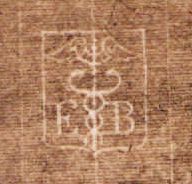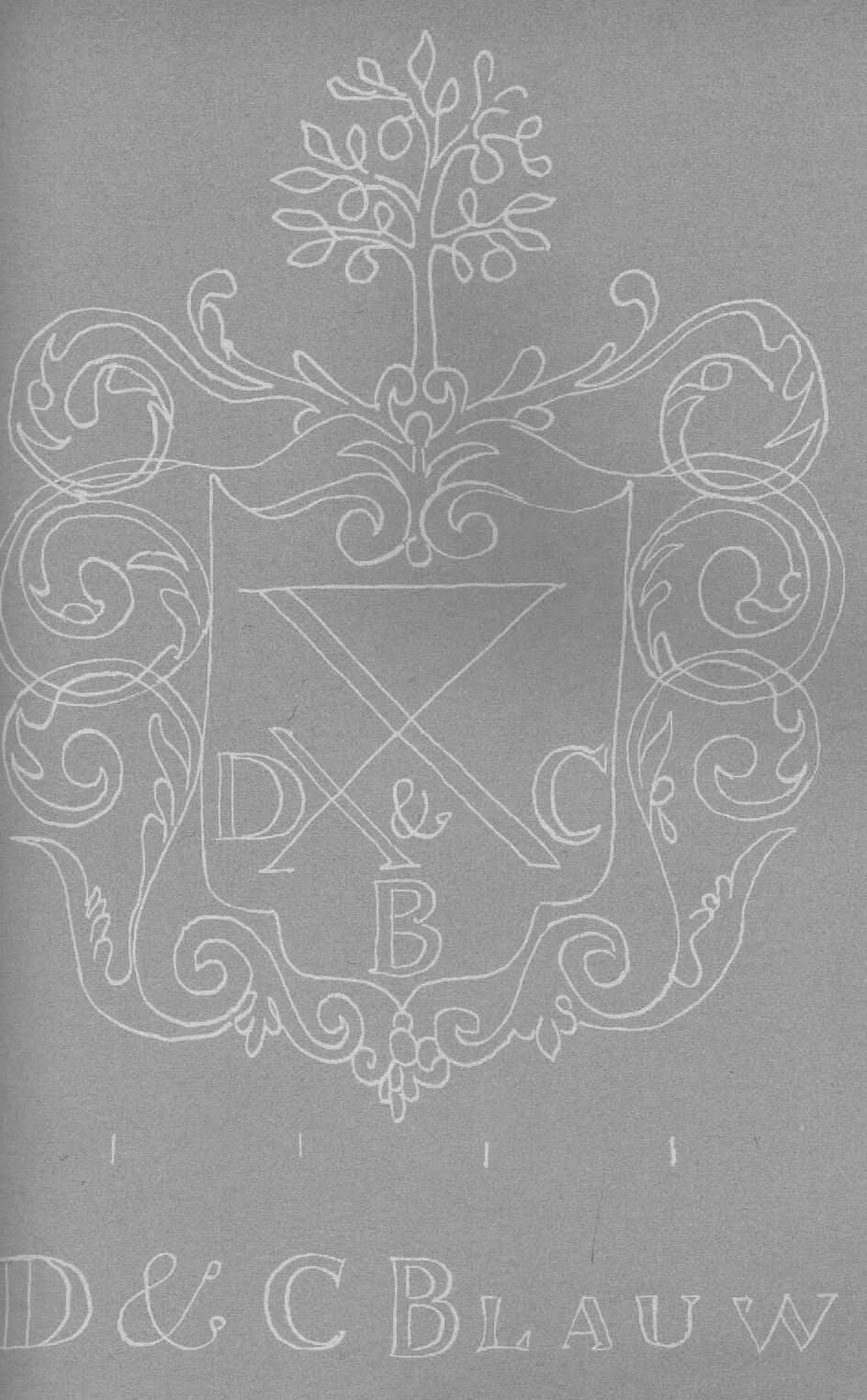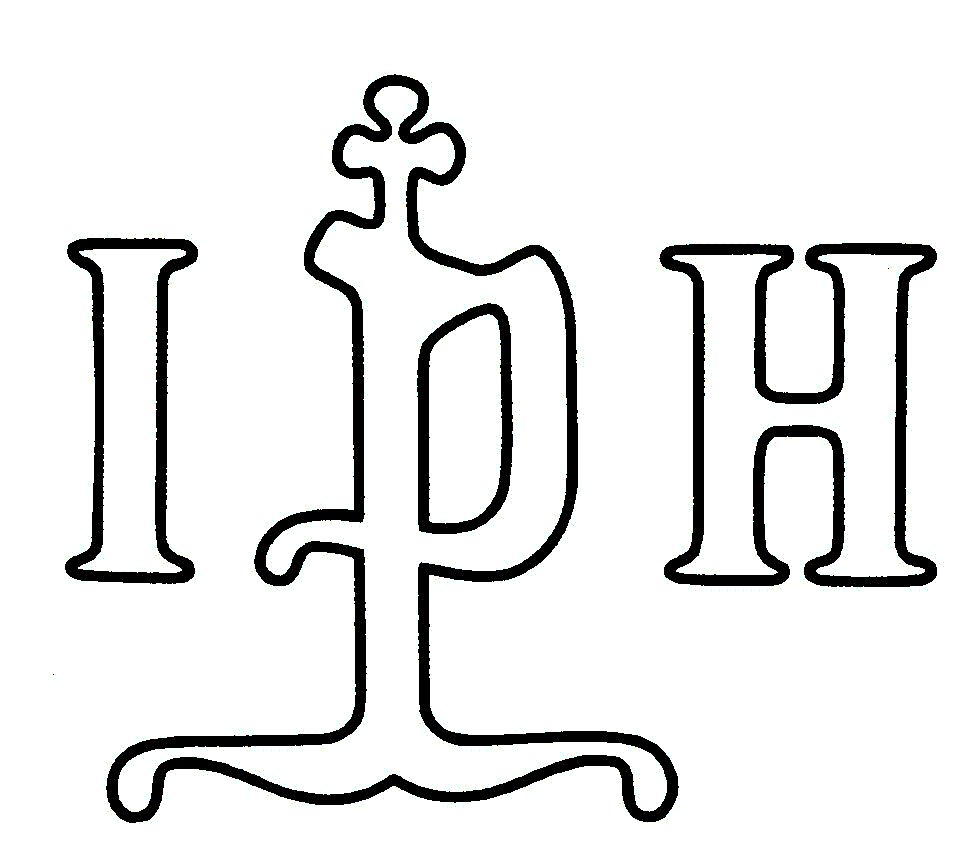Questions
|
Answers
|
Can anyone help me with what papers were used by British Soldiers
during the Second World War for Watercolours? In general whether the papers
and watercolour pigments they used were issued by the Ministry of Defence or
whether they were their own papers and watercolours? Who were the major paper
makers of the time? Does anyone know of someone who would know? All
information welcome no matter how trivial.
Robert Wynne-Jones MA Conservation Camberwell College of Arts - The London
Institute (question received 8/12/2000)
|
Who's got the answer to this question?
Please e-mail us

|
|
Who can help me with informations about the
so called CHAPELLE-Machines? I need information when, where and in which form
this machines were built. I found one of these machines in an article from
1856 with the information that it was build up in 1842 (Firma Diedrich Riedel in Rostock,
Germany). Who
has plans or technical dates of this machine-type or a machine list?
Roman
Luplow
(question
received 3/10/2000)
|
Who's got the answer to this question?
Please e-mail us

|
|
I'm doing some research on the 6 papermills
which were in Tealby, Lincolnshire, until the late 19th century.
I would like to find out who they made their 'good quality' paper for? Yours hopefully,
Christine
Harrison
(question received
6/9/2000)
|
You say there were 6 papermills.
I only know of 3: High papermill, Low papermill, Springside.
I live in Tealby and I am writing an article on the
mills and the papermakers.
Please can you send me a copy of anything you have written
Hugh Nott
(answer received 20/3/2001)
|
|
I would like to know if there is any biography about
the Miliani Family, papermakers of Fabriano. Is this family working since the 13th century?
Is there any Italian family connected with paper from this time?
Miguel Fonseca
(question received
8/2/2000)
|
Dear sir, here you'll find a very short biography about Miliani Family of Fabriano. Miliani became papermakers in the XVIII century (there is
no news about this family before this century). Pietro
Miliani was employed as papermaker in a papermill owned by a noble fabrianese
family (counts), Vallemani, landowner and owner of
a papermill in Fabriano. Pietro Miliani became a
reliable person for Vallemani, who was an ancient
count, more involved in his farms rather than in the papermill;
as P. Miliani was a clever person and very
interested in papermaking, the count gave him the whole responsability
of his papermill (1782). In a short time P. Miliani became owner of the same papermill
(1785), that was expanded and strengthened. Step by step Miliani
purchased some other papermills located near Fabriano (1791-93), becoming the chief of a little
"empire of paper", which was inherited (1817) by his sons, Niccolò (+ 1835), Tommaso
(+1842) and Rinaldo (+ 1862), and then by the
nephew Giuseppe (+1887) and the son of Giuseppe, Giovanbattista.
After the Second World War the Miliani Group became
a corporation. Now the owner is The Polygraphic of
Italian Republic.
Bibliography:
G. Castagnari (editor), La città della carta
[The capital city of paper], Comune di Fabriano, Fabriano, 1982
G. Castagnari, U. Mannucci
L'arte della carta a Fabriano [Papermaking
in Fabriano] Museo della carta e della filigrana, Fabriano, 1991
G. Castagnari Giovanbattista
Miliani, industriale della carta [G. Miliani papermaker] in AA.VV., Miscellanea di storia della
carta Pia Università dei Cartai, Fabriano, 1991
A. F. Gasparinetti [editor] Pietro Miliani fabbricante di carta [P. Miliani papermaker] Cartiere Miliani Fabriano, Fabriano, 1963
F. Mariani L'antica
cartiera di Fabriano Il Lavoro Editoriale, Ancona, 1997
Franco Mariani
(answer received
9/5/2000)
|
|
FIRST
QUESTION OF THE NEW MILLENNIUM
Who could help me identify this watermark (crest with an 'winged' aesculapius sign and the initials EB).

I think it is French 19th c., but I would like to know more. The same design
was used for a blind stamp. I am curious by whom or by which institution it
was used.
Your webmaster
(question received
01/01/00)
|
Who's got the answer to this question?
Please e-mail us

|
|
I am trying to locate any history on the sizes of
paper. Specifically, where did the size 8 1/2 x 11 originate? When? Where? By
who? Can anyone help?
Fred Zingg
(question received 20/12/99)
|
You will find a lot of information in C.M. Briquet's Les filigranes
(1907), first volume, as well as in an article by our IPH honorary member Oriol Valls i
Subira, "Les formats du papier
et la pierre de Bologne",
published in our periodical IPH-Information 9/2 (1975), pp. 26-30.
Perhaps you may also find some useful information in my book Italian
Late-Medieval and Renaissance Drawing-Books from Giovannino
de'Grassi to Palma
Giovane. A codicological
approach, pp. 37 ff.
Dr. Albert J. Elen
(answer received 29/12/99)

|
|
In a French (or Swiss) music manuscript dating ca.
1813-1815 the following watermark is found: Fellows 1808. I would appreciate
any information about this papermaker. English or?
Kenneth Sparr
(question received
9/12/99)
|
About Kenneth Sparr’s
query: an illustration of a FELLOWS watermark is given in Heawood’s
1950 catalogue in plate 434 (with the year 1827). Another (with the year
1810) is to be found in IPH Information 2/1983, p. 81. Fellows was the name
of three papermakers mentioned in A.H.Shorter.1957. Paper Mills and Paper
Makers in England
1495-1800, pp. 140,142,182,262. Their forenames were James, John and William,
and they had paper mills in Buckinghamshire and Kent. Kenneth Sparr’s mark, with the year 1808, would be quite
consistent with use in say 1810-1815.
Russell Jones
(answer received
8/8/2000)
|
|
Je recherche des informations sur les fabricants
de papier photographique
des années 1860-1930. Pouvez
vous m'aider
I am looking for information on the producers of photographic paper in the
years 1860-1930. Can you please help me?
Christian Sixou
(question received
13/11/99)
|
Les annuaires de la papeterie permettent (parfois) de retrouver les
fabricants de papier photographique
sans toutefois donner
beaucoup de précisions.
Par exemple, l'annuaire
de l'Office des fabricants de papier
de 1905 indique 6 fabricants:
- Aubert-René et Cie à
Bas-Aubert par Francheval
dans les Ardennes (maison
également à Paris);
- Bergès Père et fils à Lancey (Isère);
- Blanchet frères et Kléber à Rives (Isère);
- Ernest Gaillard à Saint-Vincent de Blanzat (Puy de Dôme);
- Société Lumière et ses Fils à Lyon-Monplaisir (Rhône);
- Papeterie de Vidalon à Vidalon-les-Annonay (Ardèche);
Bien évidemment, il faudrait faire des recherches
plus poussées (au niveau
local) sur ces entreprises.
Que recherchez-vous précisément?: les entreprises ou les procédés de fabrication?
Vous pouvez me contacter au Musée du Papier d'Angoulême (05 45 92 73
43) ou par courrier
électronique. .
Denis Peaucelle
conservateur, Musée du
Papier d'Angoulême
(answer received
29/11/99)

|
|
I
wonder if someone could help to find the origin this watermark; it belongs to
a Portuguese manuscript dating from the end of the 18th century
Miguel Fonseca
(question received 19/11/99)
|
This is only the central part of a much larger
watermark, consisting of a crest, with scrolls and topped by a tree (see
ill.). The entwined crosses 'xX' in the shield are
the merchants mark of the Dutch papermakers family Blauw.
 The Blauw firm operated five wind papermills in the Zaanstreek in
the Dutch province
of North Holland (North
of Amsterdam) during the second half of the 18th century. The initials 'D
& C B' stand for Dirk and Cornelis Blauw. The Blauw firm operated five wind papermills in the Zaanstreek in
the Dutch province
of North Holland (North
of Amsterdam) during the second half of the 18th century. The initials 'D
& C B' stand for Dirk and Cornelis Blauw.
See H. Voorn, De papiermolens in
de provincie Noord-Holland (De geschiedenis van de Nederlandse
papierindustrie, vol. I), Haarlem 1960, pp. 138, 207 (fig. 165,
reproduced here: this watermark was found in a document dated 1768), 416-417.
Dr. Albert J. Elen
(answer received
21/11/99)

|
|
I have come across a newspaper - The ULSTER COUNTY
GAZETTE - 1 april 1800 (Ulster
County, New York).
The paper covers the death of George Washington. I would like to get
information on the proper handling of this material in order to preserve it
for may family.
Fred W. Schmitz
(question received
15/11/99)
|
I would suggest going to the New York Public
Library, which has a special department for Paper History. They also have a
conservation department, where they may give you expert advise on how to
preserve your newspaper. When printed in 1800 the newspaper must have been
printed on handmade paper (basic material: cotton rags), which is easier to
preserve than machinemade paper (basic material:
wood pulp) introduced around the middle of the 19th century.
Dr. Albert J. Elen
(answer received
21/11/99)

|
|
I am editing an article for publication this week
about the manufacture of experimental Silkote postage
stamp paper at the S.D. Warren Co.in Westbrook, Maine, U.S.A.,
in 1954. In
three paragraphs of reminiscences by a back tender, the words "pope
reel" are used once in the second paragraph. Can you please tell me what
a pope reel is, what it does, and where its name comes from?
The three paragraphs follow: "I recall working on the paper machine as a
back tender. My job was to take care of the dry end for proper drying of the Silkote paper. The boss machine tender and the machine
tender working at the wet end of the machine were to make sure that the right
stock was put together along with the color going
through the coater midway of the machine." [...] "It was also my
job to make sure the color was of good quality. I
also took care of the pope reel and when it reached proper size, we removed
it to the winder for proper width of rolls. At this time it was shipped to
another department for the final finish of the Silkote
paper" [...] "During the time when the stamp was printed the
Westbrook postmaster did manage to save a full sheet of the 2¢ Jefferson Silkote"[...] "Somewhere between 1963-64, the
postmaster, knowing that I worked as a papermaker at S.D. Warren, showed me
his full sheet. I purchased the sheet of stamps from him and have kept it in
a safe place for the last 34 years".
Rob Haeseler
Senior Editor Linn's
Stamp News
(question received
20/10/99)
|
The pope reel is the ultimate part (a reel) of the
paper machine, where the paper web after drying is wound up (transmitted by
air) onto the reel or winding roll to form the drum. The name 'Pope' is the
name of the inventor.
Dr. Peter F. Tschudin
(reply received 22/10/99)

|
|
I am trying to find out any information on a Watermark. It is on a laid paper
whose lines are 1 1/4 inches apart. The Watermark is a crude cross being
formed out of an imperfect rectangular box which appears within a circle. The
top of the cross touches the top of the circle and the rectangle corners
touch the bottom of the circle. Does anyone know anything about it? Also I am
looking for information on another Watermark with the name La Stella. Also on
laid paper whose lines are 1
inch apart. This has a floral design around the bottom
of it and a star at the top.
Charles Purro
(question received 5/9/99)
Dear Miguel Fonseca, thanks for getting back to me. Sorry it has taken so
long to get back to you. I was having the document which is a manuscript
birds-eye type view of Malta
cleaned by a conservator and just got it back. Once the paper was cleaned I
was able to make out a watermarked name which appears to be J. Bouchet or J. Boucher. I am trying to date this manuscript.
It appears to me to be an 18th century item. If you have any information
regarding this name. It would be greatly appreciated. This J. Bouchet or Boucher used a cross type watermark as well
described in my last inquiry.

Charles Purro
(2nd question received
24/1/2000, revised 2/2/2000)
|
Dear Charles. Is it possible to digitalize a photo
of your watermarks? You don't mention the country of this watermark, the date
of the document, if it is manuscript or impression, and so on. You are giving
too few information to work with ... an image is needed! Please send it to
this Q&A page in gif-, tif- or jpg-format.
Miguel Fonseca
(answer received 2/12/99)

|
|
[1]Do you have any information about the papermill
in Velce Losini?
[2]When will the Papermill of Duszniki
Zdroij function again?
Werner Schöffel
(question received 3/8/99)
|
Handmade Paper Mill Velké Losiny is situated in North Moravia (Czech Republik) in the village Velké Losiny (former Gross Ullersdorf)
near the town of Sumperk
(former Mährisch Schönberg)
and was established prior to 1596. After 400 years of continuous production
the Losiny Paper Mill is today not only a unique
technical and cultural monument; it is said to be the oldest functional
manufacturing plant operating in Central Europe.
At the mill paper is made by hand using original formulas and processes that
have come down through the centuries. Also on the mill grounds there is a
Museum of the Paper (the only one of its kind in the Czech
Republic) and an Art Gallery
presenting works of artists who use Velké Losiny handmade paper as a medium. Visit the website of
the paper mill: click here.
Dieter Freyer, Vienna/Austria
(answer received 14/1/2000)
The Duszniki Papermuseum
was reopened on 3 July 1999. For more information see our news archive page, as well as the information by the director and the
photographs
of the 1998 flood.

|
|
The New York Times said in an 1864 article that most of the paper on which
Confederate money and bonds were printed during the American Civil War was
manufactured by the Marietta Paper Manufacturing Company of Cobb County
Georgia. Do you know
anything about paper manufacture in the South 1861-1865, and is this
assertion about the Marietta Company true?
M.M. King
(question received
21/7/99)
|
In answer to the question of M.M. King:
A quote from "A History of Paper-Manufacturing in the United States,
1690-1916" by Lyman Horace Weeks published in 1916. Page 269.
"Just before the war William S . Whiteman, third of the name, who had
been active in paper-making in Tennessee,
following his father and his grandfather, built another mill in the old Stone
Fort, near Manchester.
One of Whiteman mills was operated successfully on news, book, manilla and wrapping until the fall of Fort Donelson
in 1862. Throughout the war it never stopped running, night and day of
Sunday, except to clean the boilers. Its product, the largest of any mill in
the South, was shipped to every point that could be reached outside the
state. Confederate bank notes and other government securities were printed on
paper there made."
"When the war broke out in 1861 there were fifteen mills in the states
that seceded. They produced seventy-five thousand pounds of paper daily while
the daily consumption in that part of the country was over one hundred and
fifty thousand pounds, fully one half the supply being drawn from Europe and
from mills in the west. An entire suspension of newspaper publishing was at
once imminent and the burning of the mill in Augusta, Ga.,
in 1863, the largest in the south, intensified the seriousness of the
situation. Other paper mills of the period were located in Richmond,
Va., one in South
Carolina, probably at Bath; and
one in Marietta, Ga.,
operated by James Byrd, an uncle of William S. Whiteman, of Nashville."
A quote from "PAPERMAKING The History and Technique of an Ancient
Craft" by Dard Hunter published in 1947. Page
535.
" During the War between the States the Marietta mill was operated by
James Byrd, an uncle of William S. Whiteman, who owned a paper mill in
Tennessee where was made much of the paper used in printing the Confederate
money and bonds." I
hope this helps.
Albert Aldham
(answer received 12 October 1999)

|
|
ABTCP (Brazilian Pulp and Paper Technical Association) is a technical
association obligated to contribute with the technological development of the
pulp and paper sector, and a center of fundamental
research in the fields of papermaking and allied sciences. As an Information Center we
search papers for our members and customers concerning bibliographies
references or subjects requested. We have a specific request about the
history of thermal paper. Could you please provide any information for
us? If not, could you tell us how can we find it? We thank you very much in
advance for your answer, and remain,
Ana Paula Marcondes
Coordinator of Information Center
(question received 8/7/99)
|
An acquaintance of mine might have an answer to this
question as he worked on the paperlab for a company
producing photocopy machines. Please contact Hub Roncken, the Netherlands
It is worth a try. Good luck
Paper in Development
René Teygeler MA
(answer received 19/11/99)

|
|
I have been trying to research the "name"
of a design. It is most often seen on the endsheets
or cover binding on older sewn-bound books. It is also featured with fine
stationery. The best that I can describe the design is: A swirling or
dragging of pigments on top of the fibers of the
paper. It seems to have been very common in its day, but is now only seen in
connection with "fine" stationery. Any help you can provide is
appreciated.
Gretchen Tiger
(question received 2/7/99)
|
It is not altogether clear to me what you mean.
Perhaps you are describing marbled papers. Try that as a keyword at one of
the main search engines.
Albert Elen
(answer sent 2/7/99)
Thank you, Yes, it was a marbled paper (peacock to be exact) I was seeing in
my mind. I found a wonderful site based on your suggestion. Gretchen
(reaction received 6/7/99)

|



![]()


